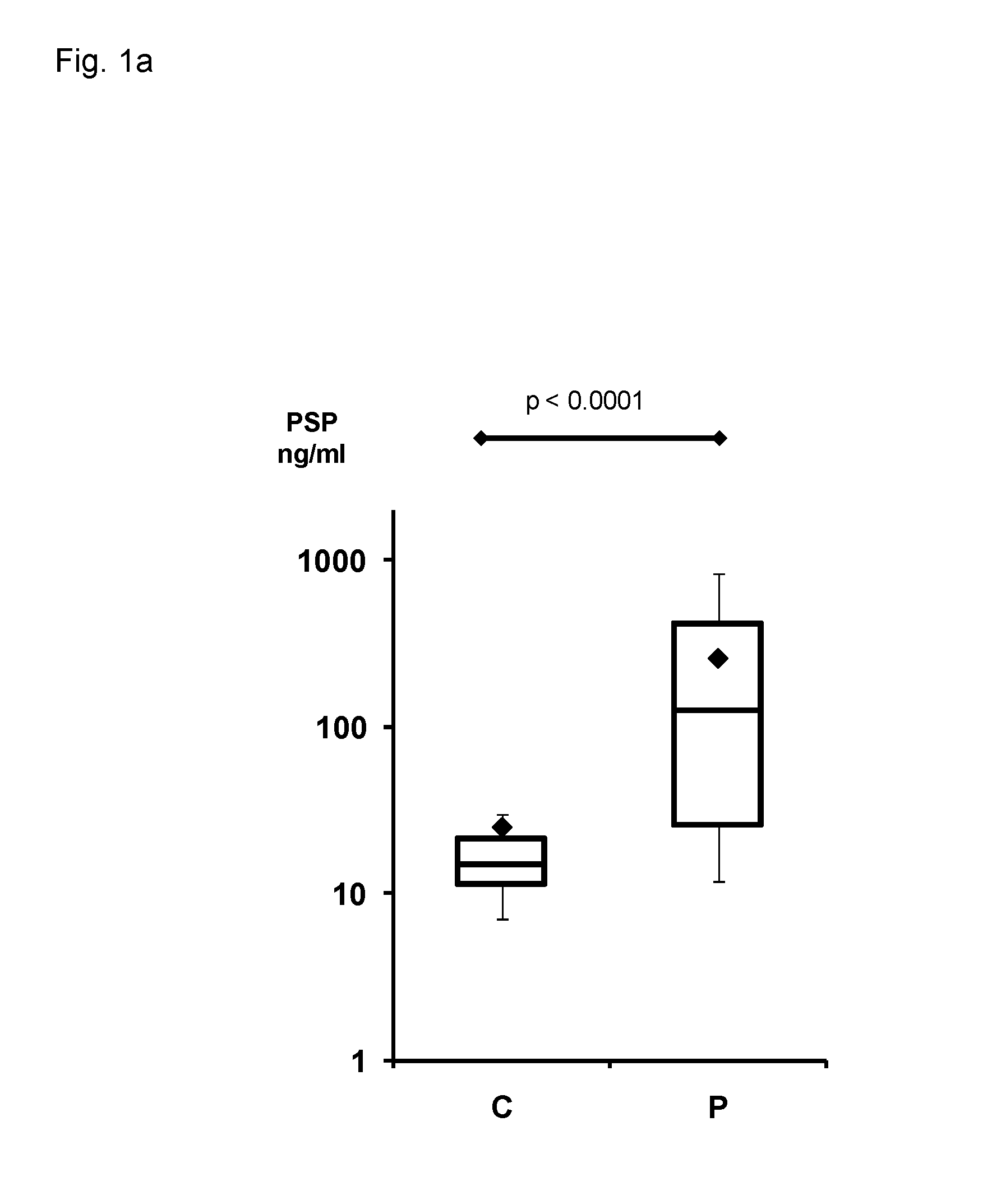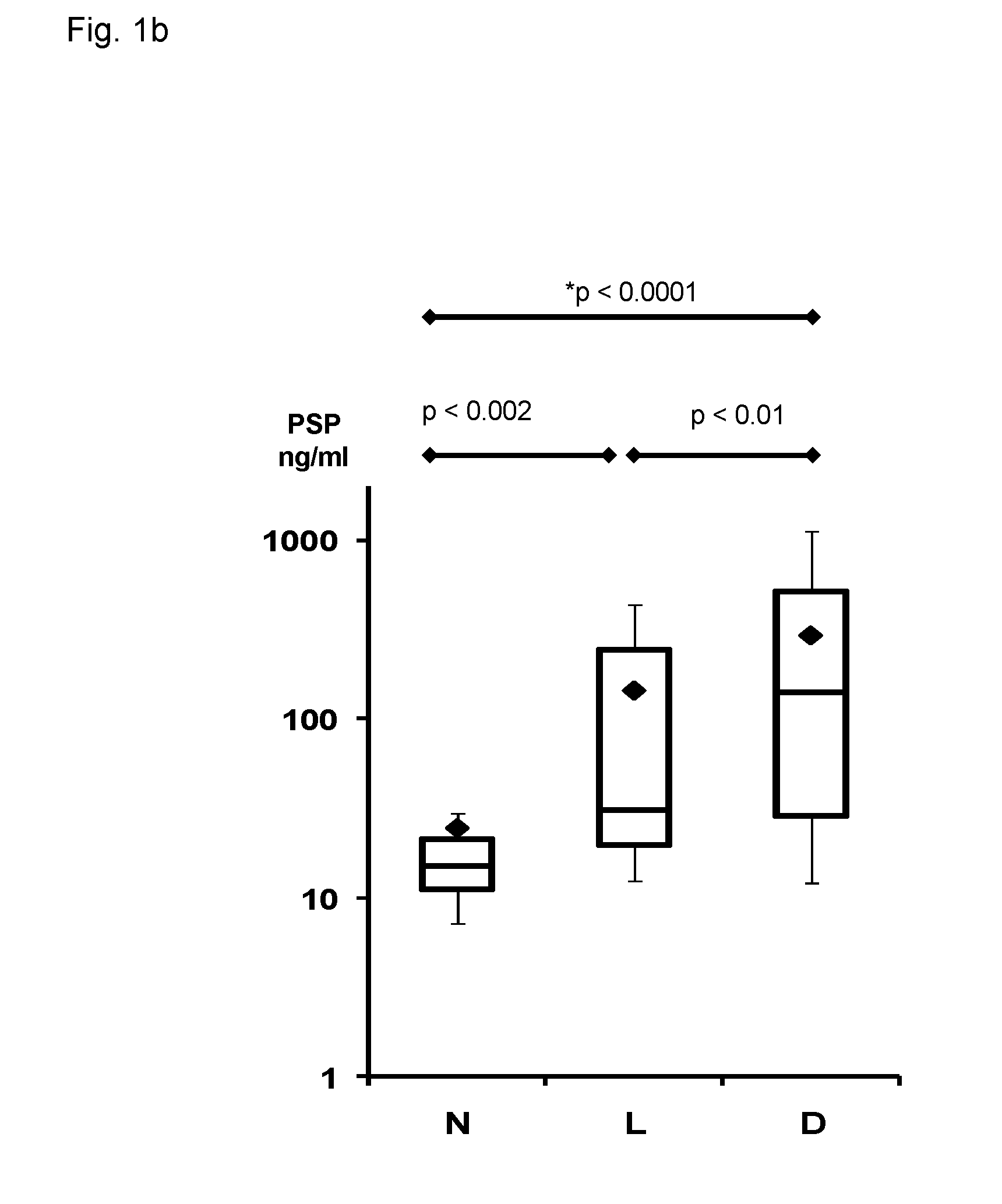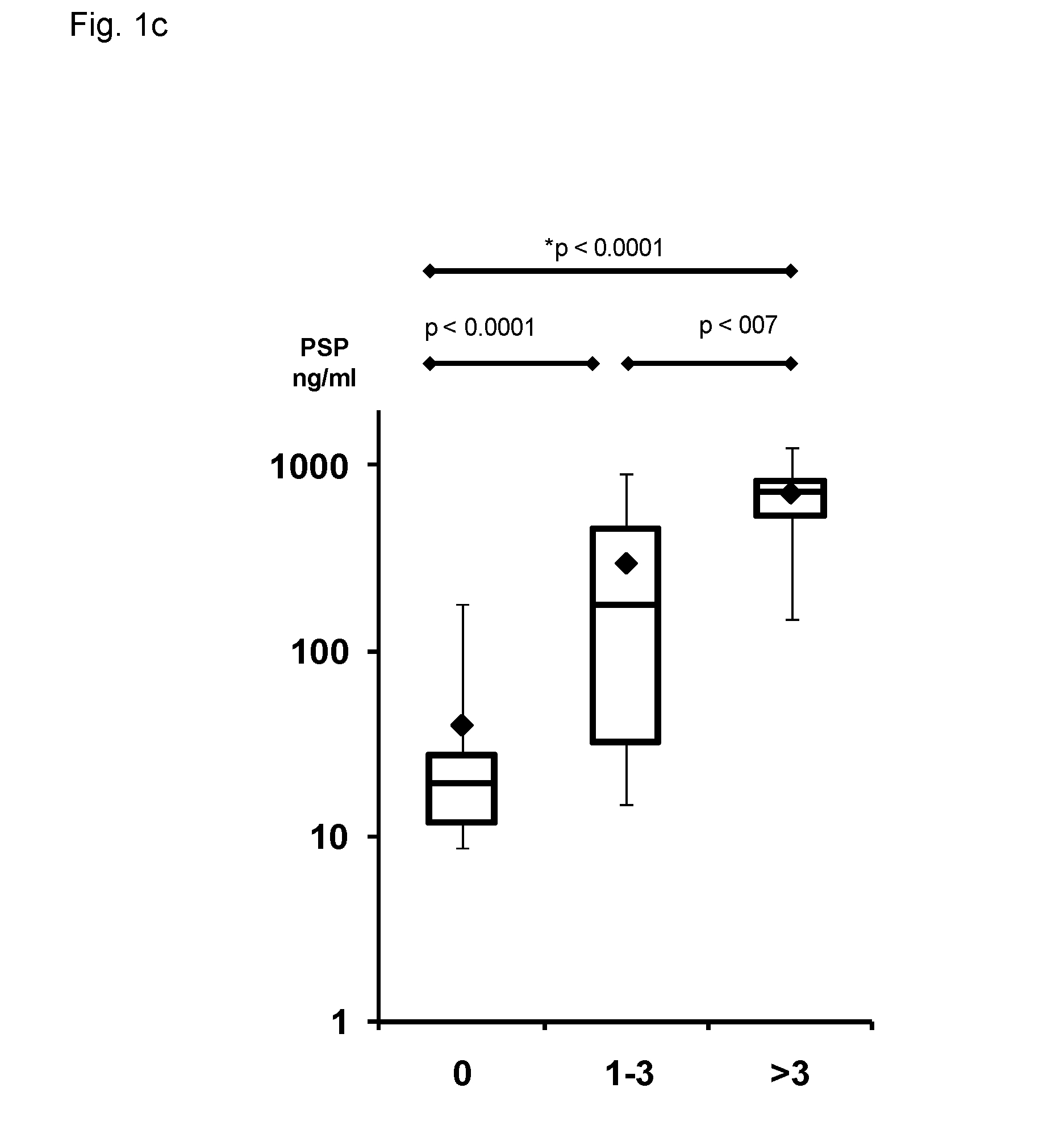Method for assaying peritonitis in humans
a peritonitis and human technology, applied in the field of human peritonitis assaying, can solve the problems of difficult to accurately define the disease and assess its severity, impede accurate diagnosis, and high psp/reg levels
- Summary
- Abstract
- Description
- Claims
- Application Information
AI Technical Summary
Benefits of technology
Problems solved by technology
Method used
Image
Examples
examples
[0071]Isolation and Subcloning of PSP / Reg
[0072]In order to obtain cDNA for the production of PSP / reg specific antibodies, such cDNA is prepared by reverse transcription of pancreatic mRNA using state of the art laboratory methods. A PCR reaction using primers specific for the sequence coding for PSP / reg and selectively amplifying PSP / reg cDNA is performed. The PCR reaction is then repeated with the elongation primer to add a sequence specific for insertion into the Pichia pastoris transfection vector. The primer is designed to fuse the coding region of the signal peptide of the alpha-mating factor with a KEX2 site and the coding region of the mature human PSP / reg. Subcloning into the Pichia pastoris vector is a two-step procedure. First the PCR product is ligated into the pCR2.1 vector (Invitrogen, TAcloning) and the sequence verified. Then the PCR product is cleaved by XhoI / NotI restriction digestion and ligated into transfer vector pPIC9 (Invitrogen). The Pichia pastoris strain KM...
PUM
 Login to View More
Login to View More Abstract
Description
Claims
Application Information
 Login to View More
Login to View More - R&D
- Intellectual Property
- Life Sciences
- Materials
- Tech Scout
- Unparalleled Data Quality
- Higher Quality Content
- 60% Fewer Hallucinations
Browse by: Latest US Patents, China's latest patents, Technical Efficacy Thesaurus, Application Domain, Technology Topic, Popular Technical Reports.
© 2025 PatSnap. All rights reserved.Legal|Privacy policy|Modern Slavery Act Transparency Statement|Sitemap|About US| Contact US: help@patsnap.com



